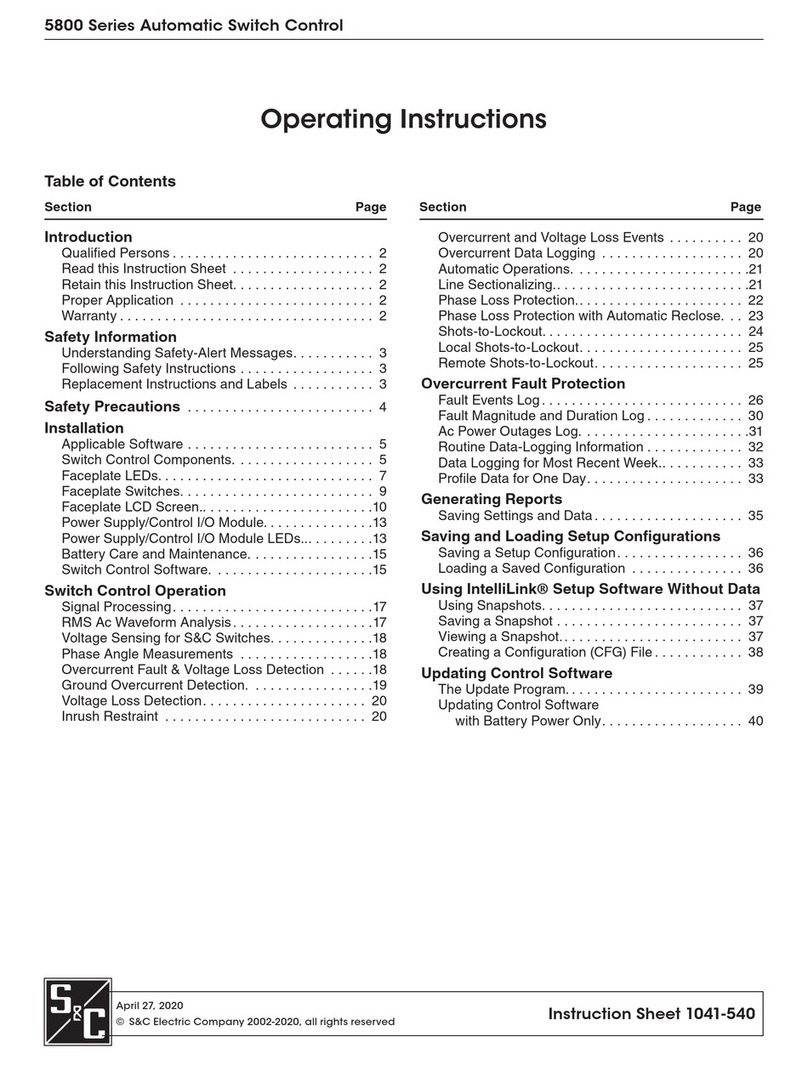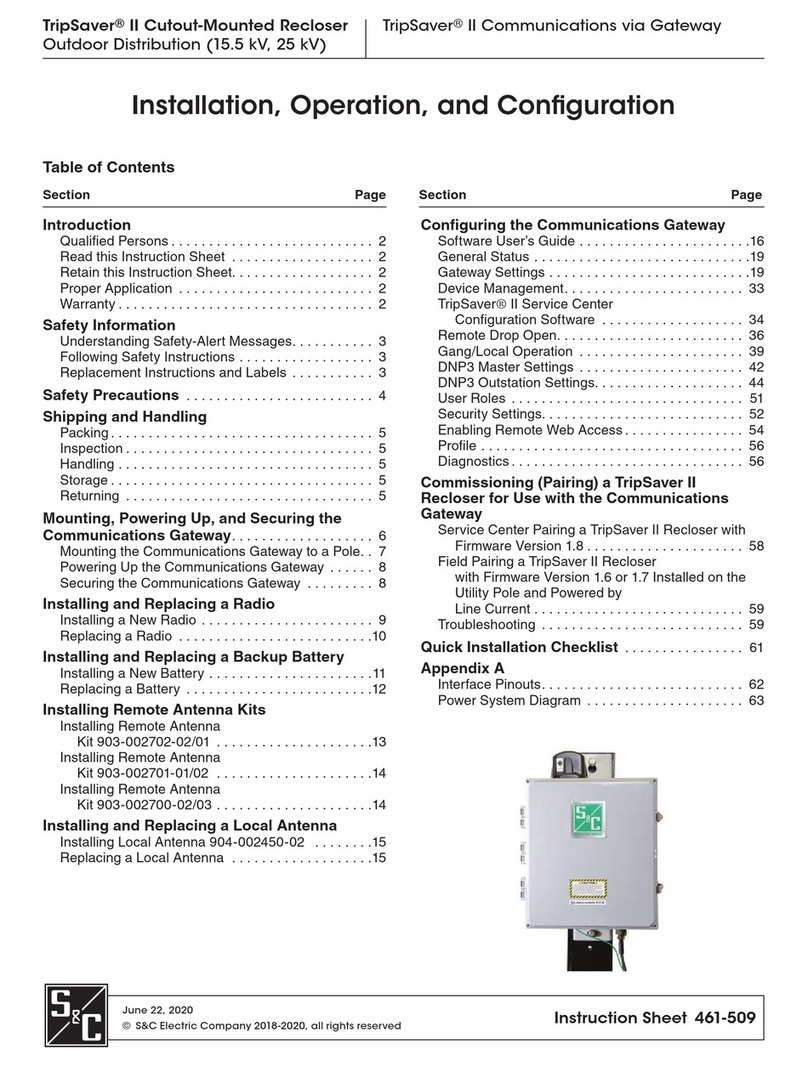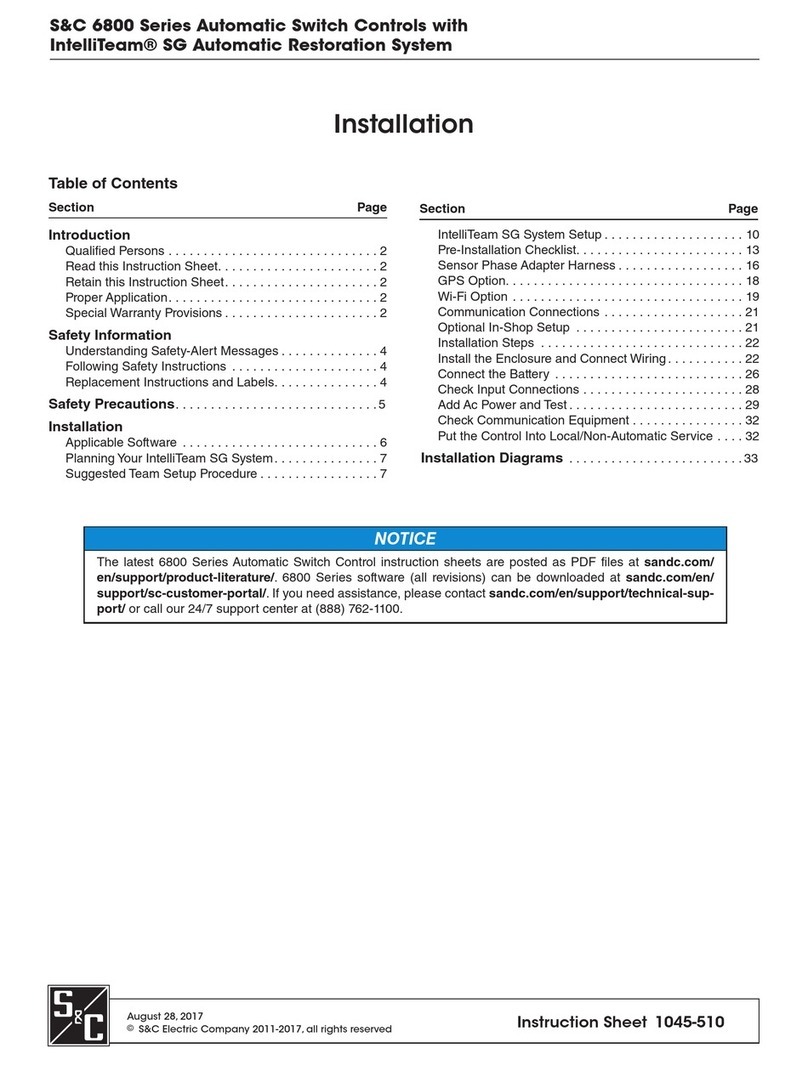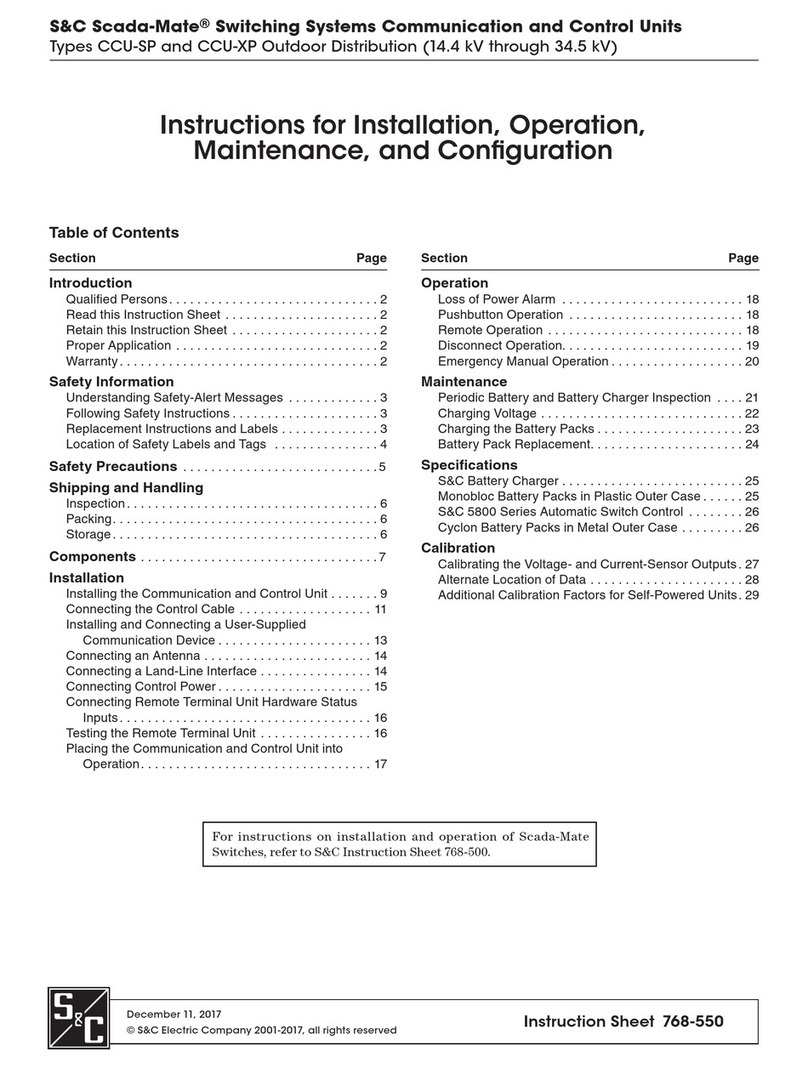
BankGuard PLUS S&C Electric Company
Control Proprietary Information
4 Operation 1011-540 5-17-04
NOTICE
Following Safety Instructions
If you do not understand any portion of this instruction sheet and need assistance, contact
your nearest S&C Sales Office or call S&C Headquarters at (773) 338-1000, Monday
through Friday between 8:30 AM and 5:00 PM Central Standard Time. (In Canada, call
S&C Electric Canada Ltd. at (416) 249-9171.)
NOTICE
Replacement Instructions and Labels
If you need additional copies of this instruction sheet, contact your nearest S&C Sales
Office, S&C Headquarters, or S&C Electric Canada Ltd.
It is important that any missing, damaged, or faded labels on the equipment be replaced
immediately. Replacement labels are available by contacting your nearest S&C Sales
Office, S&C Headquarters, or S&C Electric Canada Ltd.
Instruction Sheet Contents
Introduction ..................................................................................................................... 5
Applicable Software........................................................................................................ 5
Control Device Hardware and Software ......................................................................... 6
IntelliLINK Software ................................................................................................. 7
SCADA Communications Equipment ............................................................................ 8
Control Device Operations.............................................................................................. 9
Overvoltage Protection for Capacitor Banks .................................................................. 9
Protection for Reactors.................................................................................................... 9
Automatic Control Features .......................................................................................... 10
Ungrounded and Grounded Wye Shunt Capacitor Banks............................................. 11
Ungrounded Wye Shunt Reactors ................................................................................. 15
Signal Processing .......................................................................................................... 17
Generating Reports........................................................................................................ 21
Saving and Loading a Setup Configuration .................................................................. 22
Viewing IntelliLINK Software Without Data ............................................................... 23
Using Snapshots (VM Files) ......................................................................................... 24
Updating the Control Device Software ......................................................................... 26
“NOTICE” identifies important procedures or requirements that, if not followed, can
result in product or property damage if instructions are not followed.
Thoroughly and carefully read this instruction sheet before programming and operating
your S&C BankGuard PLUS Control.
































